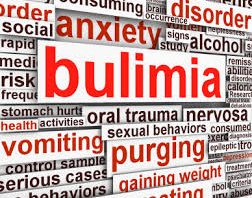Being that I am a chemistry major at Concordia, I have taken my fair share of chemistry courses, none of which are anything like my experience of taking this Neurochemistry class. This course is a capstone course, meaning that it is a writing intensive course designed to be a final experience prior to graduation where one can apply everything they have learned in one course.
Although this course was far different from any other class I have taken at Concordia, it was a nice change of pace. It allowed me to learn material in a different way, by struggling alongside my peers in order to decipher the material we encountered each week.
The group discussion portion of the class was a great way to end the week and it was beneficial to have time set aside to discuss pressing issues with my peers. In this day and age more things are discussed over social media, so it was refreshing to have face-to-face interactions. I feel that it is important to be open about our opinions, and everyone brought their own experiences to the table. This allowed me to think deeper about the issues at hand and consider views that differed from my own.
The writing portion of this course allowed me to develop skills in communicating science to the public. This is an essential skill for anyone who is heading into a career path related to science. Science seems pointless if we are unable to communicate it to the general public.
I have had previous classes with every single person in this class, but I really got to know them through one-on-one interactions with them on a weekly basis. I have established friendships from taking this class, and I owe that all to Concordia for bringing together such a fantastic student body, and I will be forever thankful for the friendships I have developed here!
As a parting remark, I would like to thank everyone who has read my blogs, and I hope you enjoyed reading each week about the new material we encountered!

Bulimia: what's the cause?
Bulimia nervosa, BN, is a mental disorder that is characterized by binge eating and behaviors such as excessive exercise, self-induced vomiting, and laxative abuse.
One of the telltale signs of Bulimia is seen by looking at the teeth, meaning that it is often detected by a Dentist. The self-induced vomiting causes an erosion of the enamel on the back of the front upper teeth.
The science behind bulimia reveals that serotonin and estrogen play a role in its development. Specifically, there is a decrease in the signaling of estrogen within the brain that leads to decreased signaling of serotonin within the brain. Estrogen deactivates the serotonin 1A receptor, which leads to more release of serotonin but with a dysregulation in estrogen there is a decreased release of serotonin.
The decreased estrogen function explains the “out of control” feelings associated with BN. Decreased serotonin signaling leads to feelings of anxiety and impulsive behaviors, both characteristics of bulimia.
It is hypothesized that bulimia begins with a mood disorder. Decreased serotonin levels in the brain can lead to depression, which explains the presence of a mood disorder in individuals with bulimia.
But what’s the initial cause of bulimia? As mentioned above, there is a dysregulation of estrogen and serotonin signaling in the brain, but what is the media’s role in bulimia. Bulimia develops most often during puberty. If teenagers are constantly being told by the media that they need to be skinny, then it seems logical that bulimia would develop in today’s youth.
Capstone Reflection
At Concordia, it is always emphasized that we BREW, become responsibly engaged in the world. Neurochemistry, as a capstone course is a class in which one could BREW quite a bit, maybe in the way of just having a different perspective about certain things in today’s society, like bulimia, obesity, autism and other disorders or diseases that can affect the brain. After taking this capstone, I feel I know a little bit more about these diseases or disorders than I did previously, and have a new view of regarding certain aspects of them, like how the brain works differently when it encounters high fat r high sugar diets, or how much can happen to the brain during development in the womb.
My capstone experience has also given me skills in being able to figure out how to read difficult articles with a lot of unknown topics in them and still get something out of what the article was trying to say. It is a skill that will be useful in the future, as I am a student that wishes to continue on in my education in science and being able to tackle these articles will assist me further down the road. It will enable me to learn on my own no longer needing to rely on teachers and assignments to learn.
This capstone course was very outside of the box for a science class, involving many other topics of discussion that were all interrelated to science, like debates in the sports world about concussions or legalization of cannabinoids for either medical or recreational use. We covered topics that are prevalent to topics in the new. Instead of covering some material and then there will be a test to regurgitate it all, we learned science gradually and hand in hand with the real consequences of this science if it is not working properly.
Neurochemistry was a class where the students taught each other a lot of the times, which was helpful to my learning it better if I was teaching it, or my understanding it better if it was being explained to me in terms that most all of my peers could understand. By learning in this way, we were all accountable for doing our work on time, for if not then others would not get the information they needed, thus it was an effective way to ensure that work was being done in the course without the necessity of turning in a worksheet every day.
Concordia has truly helped instill a love of learning within me, I enjoy going to classes in my majors and am excited to see what more I can learn before I leave. While neurochemistry was not the subject that I am most interested in within chemistry, I still found that it helped grow my love of learning. It gave me the tools that I need to keep learning on my own past college, as I now feel more confident in researching online and learning about science through methods other than a textbook or a lecture.
Capping Off the Concordia Experience
Initially coming to Concordia, I had no idea what to expect. The institution said that it would “instill a love of education” and at the time, all I could think is “oh boy…”. I can’t claim that I was the most studious high school student.. In fact, I don’t recall one time that I had to actually sit down and study for an exam. Except for a select few teachers, I feel like I was never truly challenged in high school. That all changed once I came to Concordia.
Reflecting on the past three and a half years, I firmly believe that attending Concordia was one of the best decisions I have ever made. Initially, I carried over some of those non-existent “study habits” that I had in high school, which really kicked me in the ass my first semester of freshman year. I wasn’t used to not getting all A’s.. and so that actually made me quite mad with myself. That semester was extremely humbling in that I realized I wasn’t currently that good of a student. It’s all different now.
I believe that my capstone course (Neurochemistry) has fully incorporated what it means to be a good student. Instead of just listening to a professor speak and jotting down notes, I felt like I was fully engaged in discussion all the time. Because of this engagement, a lot was required of me. It took extensive research on topics out of class time. Not all of the research I did was mandatory, however. There were nights where I was genuinely curious about what was going on in our minds (and what a wondrous, yet confusing thing it is!). This course has thus taught me how to love my education. This curiosity will travel with me into my career as well. I aim to go into the dental practice with the hopes of becoming an oral surgeon someday. It is a high goal, but also one that is very feasible for me if I consistently am engaged like I was for this class.
Thankfully (actually, not always thankful), this was not my only class this semester. I was taking 2 other chemistry classes, our extremely demanding human anatomy and physiology course, and a 300-level history course on modern east-asia (which required grueling amounts of reading). I say thankfully because all of my classes (besides the history course) intertwined in content at one point or another. I feel that this intertwining was a result of having this capstone course. Whether the content was actually required of the course, or whether the content was brought up in Friday discussions, relevant perspectives of different cultures and what other people were educating themselves on were represented. This engagement from my fellow peers played a massive role on my self-actualization and understanding. I cannot begin to thank the professor, Dr. Julie Mach, and my fellow classmates enough for the benefits that they have unknowingly contributed to my education and my love for learning.
Overall, I am very glad capstone courses are required of the students here at Concordia. Although seeming like they require a lot of discipline and dedication to the coursework, which they do, it is extremely important to instilling what this college is all about.
Is Obesity a Choice?
If you actually know me, you would know I can come across as a “health nut” and I am proud of that. I wasn’t always this way though.. Up until about my junior year of high school I was always that kid other kids called “fatty” or “chunky”, and it’s true.. I was, in fact, overweight.
I remember getting the call from my mother on the way to school. My grandpa had passed. I was still pretty young at this time, and I never got to see him much, and unfortunately, what I do recall of this man was that he was always suffering from his diabetes. He wasn’t necessarily the most self-conscious about his health and I remembered that I didn’t want my future grandchildren to remember me in the same way, so I changed my habits and started being conscious about what I was putting into my body. The summer following my junior year I started exercising and subsequently went from weighing about 210 lbs to about 165 lbs. Words cannot describe how proud I was of myself for turning my life around like that; which gave me a new reason to remember my grandpa by. In my case, getting in shape was a choice, and I encourage others to be active each and every day, because turns out: once obesity is onset, it becomes harder to “cure” it.
In a study we read for neurochemistry, hypertensive rats were given the choice between a high-fat diet and a “regular chow”. Not only did they increase their body weight in choosing the high-fat diet over the other, but they also displayed leptin and insulin resistance and further increased blood pressure. We don’t know why, but it is hypothesized that with an increase in obesity, there is a biological mechanism saying “eat more” of these fatty consumables.
Individually, I looked into the role the circadian rhythm has on obesity. Turns out, everyone is right in saying that YOU NEED SLEEP. Altering the circadian rhythm by not getting enough sleep is one of many side-effects of not eating or exercising healthily. This then starts a vicious cycle of negatively impacting your sleep schedule. You eat unhealthy, you maybe get a worse night’s sleep, then you throw off your circadian rhythm, altering your eating habits for the worse the next day, then you sleep worse the next day and so on… It seems as if our bodies are constantly combating the ability to stay fit, and you WILL have to put in a lot of effort if you are already facing obesity, but I am here to say from experience that it WILL be worth it.
I firmly believe in fighting obesity before it becomes an actual debilitating disease. Because of the biology behind it, some refer to it as a “biological trap” which becomes increasingly more difficult as it progresses. Kick it in the butt now, before you can’t.
The Parkinson's Journey
Growing up, my grandparents always played an important role in my life, and fortunately, still do. My grandpa was diagnosed with Parkinson’s when I had just started high school. Visiting, I noticed tremors I have never seen in a person before. It wasn’t terribly onset at the time, and still is quite manageable for him, and my grandma. At the time I had no idea what Parkinson’s actually was, whether this ‘thing’ was going to threaten his life, or how much longer I actually had with him. Now, I am a little more informed of what is going on in his body, and am thankful for what this class has taught me. Here is why:
Although Parkinson disease (PD) is a neurodegenerative disorder affecting both motor and nonmotor functioning, I most likely will not lose him to the disorder. I am very fortunate, because I know others may not be so lucky… I’m thankful his PD is not as debilitating as others may experience.
The onset of PD increases with risk factors such as aging, bad genes, and some environmental factors. The unfortunate reality we face with PD is that we do not know much about it or how these risk factors interlink to play a role in the pathogenic process. What I looked extensively into for my neurochemistry class was the way PD can spread throughout the body. I don’t get to see my grandpa often, but when I do it seems as if his tremors have conquered another unfortunate moiety of his body. Because of this, I wanted to look into how it was ‘spreading’.
For background knowledge, PD is characterized by the presence of Lewy bodies, the pathogenesis of which remains unknown. There has, however, been the discovery of misfolded alpha-synuclein (asyn) being a major component of radiating filaments and Lewy neurites. This has initiated the investigation of whether or not PD should be characterized as a synucleinopathy.
As of now, researchers have looked at what is called the “seeding mechanism”. What is meant by that? Well it’s very recent research, but what they are seeing is that this misfolded asyn is somehow being transferred from cell-to-cell and poses as a “seed” for more of these asyn’s to accumulate to form Lewy bodies. These asyn particles can then propagate continuous cycles of aggregation in recipient cells.
Although not much is known about the nature of Parkinson’s, it remains to affect many, increasing in rate with age. Although my grandpa may not be entirely disabled from this disease, there are others who are. For their sake and for our own futures, we should seek to increase our knowledge of PD as we seek to increase our life-expectancy.
Science-ing Cannabis
Arguments pass back-and-forth over the use of cannabis and it becomes more and more hotly contested in politics today. I am not here to take a side on whether marijuana should be used for recreation uses, but I do think they have benefit when used medicinally, and there are scholarly perspectives to back that up.
When analyzing Cannabis sativa, the most common plant form, it is found to contain at least 400 chemical components, not all of which lead to the desired outcome of a ‘high’. In fact, as many of you may know, THC can be isolated and thus concentrated. New derivatives of THC are synthesized regularly, leading to similar, but slightly altered effects. A great percentage of the derived pharmacological compounds are created for the purpose of helping patients, but are hotly contested for their psychotropic effects as well as being a potential “gateway drug”. But what a lot of people don’t know, is how these act in your brain.
So…What is actually happening?
Your body has these nifty things called G-protein-coupled receptors (GPCRs for short) all over your cells. These proteins have the primary function of transducing extracellular stimuli into intracellular signals, which then have various effects. Turns out, cannabimimetic (cannabis-like) drugs can bind to these GPCRs, two of which have a profound significance in the brain. The first being CB1 and the second, CB2. CB1 is mainly found throughout the brain and CB2 is found with immune cells and works to modulate the immune system. Our body actually makes its own cannabinoids, termed endocannabinoids to bind to these receptors. In the act of consuming THC, you are introducing your body to endocannabinoid-like molecules, which have similar effects.
Stimulating the CB1 receptors modulates something called adenylyl cyclase, which then helps moderate how much cAMP is present, which adjusts cell activity by multiple ways, including: transferring into cells the effects of hormones like adrenaline (which cannot pass through the cell membrane), activation of protein kinases, and modulation of ion channels. Recent studies have shown that CB2 has the ability to induce apoptosis in human pancreatic tumor cells. Both CB1 and 2 have been shown to promote the apoptosis of colon cancer cells through ceramide synthesis. There are multiple other effects of endocannabinoids and endocannabinoid-like compounds in which current studies seek to answer.
As research continues to answer how the endocannabinoid system works, new drugs will be developed with the impact to have an effective therapeutic means to target benefits while also minimizing psychotropic effects. I feel that we will see an increase in cannabis-like drugs and their use in medicine. I repeat, I do not take a side on recreational use (as there are strong arguments for both sides), but I feel that in modifying this drug to do what we want, we can accomplish great things. It all starts with understanding the biochemistry behind the drug.
A Different Kind of Learning: Neurochemistry at Concordia
I am a senior at Concordia College in Moorhead, and I am just finishing up my approximately 30th college class at Concordia. I can honestly say this class was different from all of the others. It was different in the way we learned the information. Instead of one person telling everyone else what to know, we worked together to figure out the answer.
For example, we read about autism a couple of weeks ago. Instead of our professor teaching us all that she knows about autism, we read an article explaining what it is and we came to class with questions of our own that we wanted to know. For the next class day we were assigned a topic or question that someone in the class had, and we basically had to find all the information we could on that topic. We would then present the information to our classmates that next class day. By the end of that day we would make sure that everyone was on the same page as far as understanding what autism is and what the paper we read was trying to say. Our professor would help facilitate us, and she would also have a topic of her own to describe to the class. Then on the third day of that week, we would discuss with each other about what autism is and what we can do to help prevent it or alleviate its symptoms.
We repeated the procedure with several different neurological disorders, and you can read about what my classmates and I learned from our various blogs on this website. I have to say that I enjoyed this class very much. The way the class was structured lent itself to open discussion and learning about things that you actually want to learn. I think that working together to find an answer on our own actually helped to solidify what we were learning. The best part about it was that I felt like I was learning a lot without loads of busywork or memorization, as many science courses so often are.
We did have to learn some more basic information at the beginning of the course, but that was so we would understand the deeply scientific papers we would have to read later on. I think this type of class also worked very well for the material we were learning. We could learn neurochemistry by learning about various neurological disorders. This gave a very practical application for what we were learning as well. Overall, I think this is a great way to learn, and I think it should be more widely used today.
Autism: What it is and Why it Happens
The Autism Spectrum Disorder (ASD) is a neurological disorder that is often characterized by impairments in communication, inappropriate social behavior, and repetitive behaviors. Traditionally, ASD has been thought of as a genetic disorder. While it is true that genes play a role in ASD, there are also other environmental effects that can contribute to it as well.
At a very basic level, ASD can be thought of as an imbalance of excitation and inhibition in the brain. Normally there is a balance of “excitatory” neurons that send signals and “inhibitory” neurons that can stop these signals. In ASD, this balance becomes lost, and improper signalling takes place causing the symptoms that we can see. This can happen because of genes that your parents pass on to you making you more susceptible to these changes, but it can also happen because of many different environmental factors as well.
Prenatal viral infection, zinc deficiency, abnormal melatonin synthesis, maternal diabetes, prenatal and perinatal stress (stress during or around pregnancy), various toxins such as valproic acid, thalidomide, and some psychiatric drugs during pregnancy, parental age, and heavy metal poisoning postnatally have all been linked to higher rates of ASD. Interestingly, almost all of these exhibit their effect during development before the child is born. There seems to be a developmental window in the fetus that if these factors come into play they can significantly increase the risk of ASD. I also think it is important to mention that scientifically, vaccines are no longer a risk factor for autism.
These different risk factors can all play a small role as well. Any combination of these may result in some immune system abnormalities and it is these abnormalities combined with a zinc deficiency that be the major environmental causes of ASD. The zinc deficiency can compound the effects of immune abnormalities and these can then work together with the genetic factors of ASD to cause the disease. Therefore, ASD can be thought of as a rather complex disorder that may have many factors working together to develop these brain imbalances. Part of the way we can help to possibly stop this disorder from growing even more rapidly is by possibly protecting the developing baby from these factors like zinc deficiency and toxins. Genetic testing could also help determine if birth or adoption might be the best choice for you.
Finding yourself: A Neurochemistry Capstone Experience
Upon registering for this class, I had a hard time grasping I had just registered for Neurochemistry. At the end of spring semester 2015, I attended a meeting for the class. In the meeting, I was extremely intimidated. I was surrounded by some of the most intelligent students of the senior class, many of which were pursuing degrees in either chemistry, biology, or both, as it appeared a large portion of them were interested in medical school after their time at Concordia. When I introduced myself, I came to the harsh reality I was the only Psychology student.
I heavily debated dropping…
However, in talking with my parents, friends and extended family, I received the same message across all groups. Don’t sell yourself short. Just because they happen to be a biology or chemistry student does not mean that you are not just as capable as they are. I took their message to heart and continued to forge ahead in my plans to stay enrolled.
Looking back now and reflecting upon my experience, I could not be more thankful for their advice.
Even after the first couple weeks, with content containing a great deal of biology, chemistry and biochemistry, I was glad I stuck to it. Dr. Mach sent me a final blog post from a student last year, who had happened to be in a very similar position I had found myself. Her words were so encouraging. They were honest, and were exactly the feedback I needed to hear.
This class challenged me, in more ways than simply the challenging content. Even though Dr. Mock stated this at the meeting, and mentioned how she does so every time before the start of the next semester, her message rang true: We are all on the same playing field, including herself. As I became more comfortable with the students enrolled, I was able to offer my “area of expertise” so to say, with my Neuroscience and Psychology background. Neurochemistry was truly an interdisciplinary class. There were aspects of each paper and overall concepts in which all of us struggled with. In the end, it was more beneficial to have representatives from each discipline, for we were then more confidently able to attack those aspects and overall concepts.
Without the restraint of class assignments, this class allowed for my mind to wonder where it wanted. My love for learning grew immensely, for the research that I was assigned each week was often related to a topic I wanted to learn more about anyway. Metaphorically, what better way to instill a love of learning than to treat your students as a sponge, providing the water basin and encouragement for them to simply “jump in.” Dr. Mach provided me with that encouragement, and I chose to jump in full on after having read that final blog post from a student in my similar situation.
My intimidation of the other students slowly turned into friendships, support systems, and ways to overcome interactions with individuals who just downright intimidate me. With our Wednesdays and Fridays consisting of pure conversation, I was forced to immerse myself in the comforts of being uncomfortable. Slowly but surely I began to open up. I began to realize that it is okay to not know everything. Those who I had believed knew everything, didn’t really know everything. I began to see the benefit of being open and honest, with not only myself, but with my peers. For when we all began to realize that being open and honest with each other was indeed beneficial, were we able to feel accomplished by the end of each week.
I know these are skills and memories I will take with me well beyond my time at Concordia. Take the time to get to know others. Delve into content you want to learn more about, even if it makes you uncomfortable. Simultaneously, be open to sharing and expressing what you have learned.
It may be amazing what you will find.










